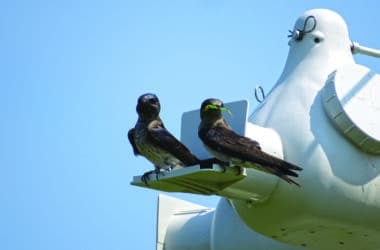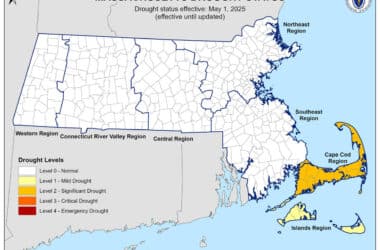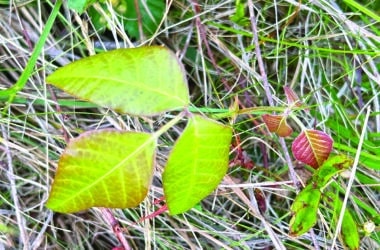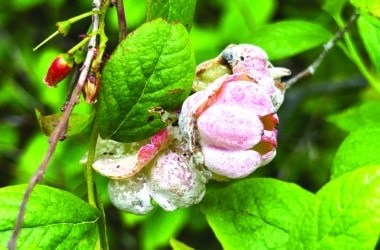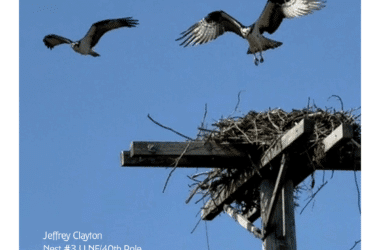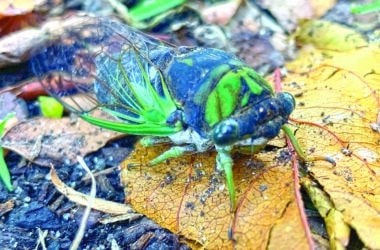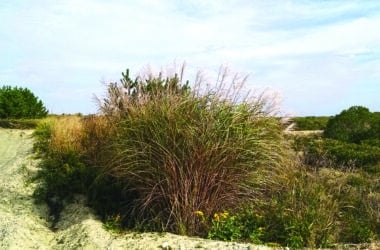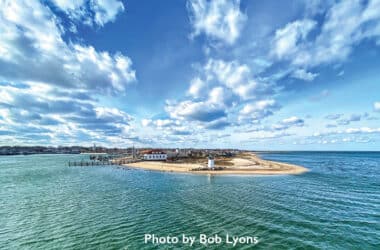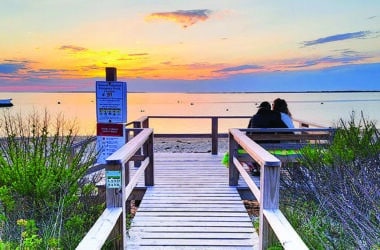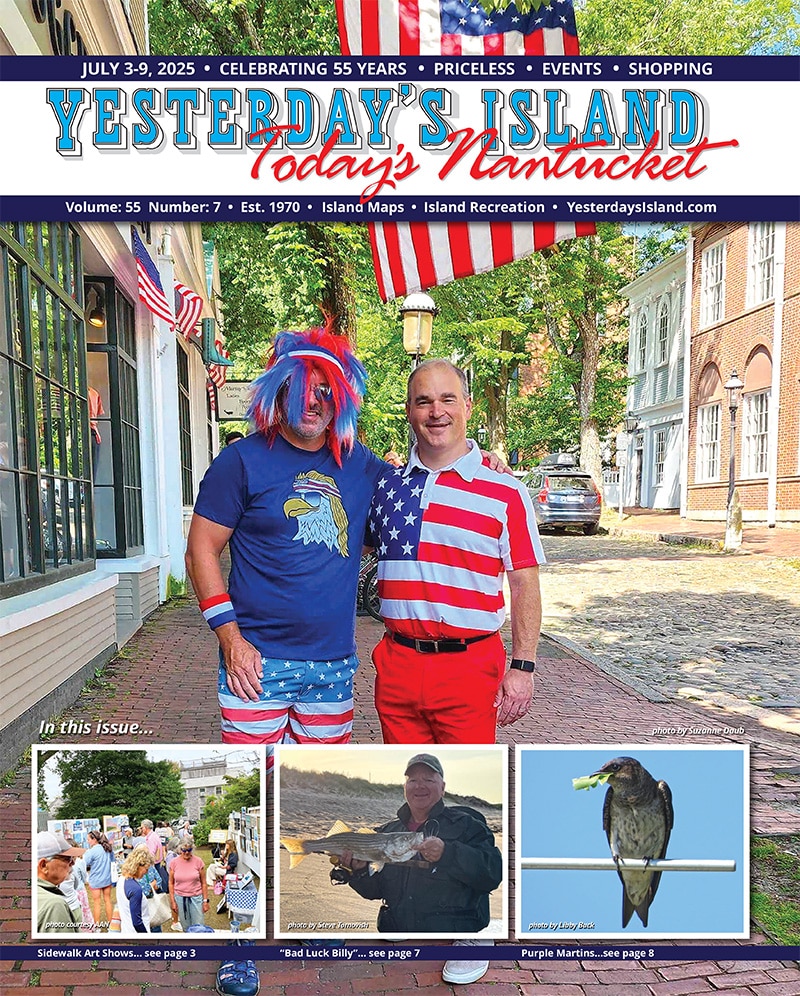Purple Martins have arrived on Nantucket for the first time ever. After three years of conservation efforts to support breeding habitat for the species, they have finally “set up house” at the Linda Loring Nature Foundation, primarily due to the efforts of Libby Buck, Conservation Science and Land Steward with LLNF.
Island Science
Water, Water, Everywhere, But…
Last week, Nantucket was placed under a Level 1 drought by the Massachusetts Drought Management Task Force, prompting mandatory restrictions on outdoor water use. Then, over last weekend, we learned that the town’s primary water pump suffered a mechanical failure, leaving the island’s water storage tank at “critically low” levels. The ensuing water use ban has included all non-essential water use, and applies only to properties connected to the municipal water system.
It’s a Love-Hate Relationship
As June settles into true summer, the flora of Nantucket really comes alive. The beach roses scent the air along the dunes, our yellow thistles open for pollinators, and the golden heathers carpet the moors. This past week, while enjoying the early summer splendor, another blossom caught my eye: small clusters of whitish-green, each flower only ¼-inch in size. The delicate five-petal flowers aren’t showy or brightly colored, but they are pleasant, gently draping in small clusters. These flowers, however, aren’t the kind to put in an arrangement or bouquet. These deadly beauties actually belong to the poison ivy plant.
Zombie Apocalypse or Just Our Island Spring?
The zombie apocalypse has been on my mind a lot lately. That may sound dramatic, but if you’re someone who reads and watches fiction like The Last of Us, 28 Days Later, or the sequels: 28 Weeks Later and the new 28 Years Later, you know that the zombie hordes are all around us. For those who don’t know what I’m talking about, a lot of zombie or similarly-themed fiction base their monsters around the idea of humans being infected by something which takes over their brain function. And, like all of the scariest things, that fiction has some basis in fact.
Call of the Osprey
A familiar sight along the harbor and around our many ponds, Ospreys are a common site as they dive for fish across the island. Ospreys (Pandion haliaetus) are iconic on-island, a part of our maritime community. Also known as Fish Hawks, they are abundant on Nantucket this time of year, having migrated back this way in late March. While these majestic birds of prey are now a fixture of early spring and summer on the island, that was not always the case.
Will Brood XIV Miss the Boat to Nantucket?
You may have been hearing some buzzzzz about cicadas in our regional news outlets lately. Throughout the state, people are preparing for an onslaught of insects. Why, when, and where?
The Mystery of Eels on Nantucket
As spring weather finally begins to grace us here on Nantucket, we begin to look for our favorite signs of spring; cherry blossoms, daffodil blooms, spring peeper chorus, osprey returning, and…eels! That’s right, the annual spring migration of young eels is upon us, heralding the start of spring for the island.
Worrisome Invaders
Ornamental grasses are a popular part of many Nantucket landscape designs. They add movement and provide drama, all while giving a naturalized look to the landscape. However, many of these ornamental grasses are now being seen as weedy, if not invasive on the island—we need to do all we can to prevent spread into our natural areas and value our native grasslands.
How to Help Plan for Climate Resiliency
Living on an island surrounded by the sea, there is no escaping the effects of climate change. Others living inland may be able to bury their heads in the sand, but on Nantucket sea level rise, erosion, storm surge, and flooding are all very real impacts that we experience regularly.
Finding New Places
The Nantucket Land Bank is celebrating its 40th anniversary this year. Not a non-profit conservation group and not quite a Town department, the Land Bank is a singular entity. The first of its kind in the United States, the Nantucket Islands Land Bank was conceived by Nantucket’s Planning Commission, adopted by the voters of Nantucket, and established by a special act of the Massachusetts Legislature in 1983. The Land Bank’s revenue is derived from a two percent fee levied on most real estate transfers on the island. This funding is used to acquire and manage land for open space, agriculture, and recreational uses. The Land Bank is governed by a five-member elected commission who oversee the actions of the organization. With these impressive resources, we, as a community, all benefit from the work of the Land Bank.

